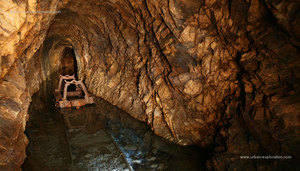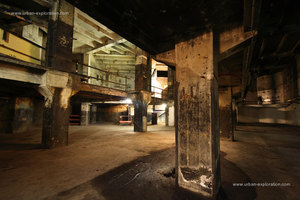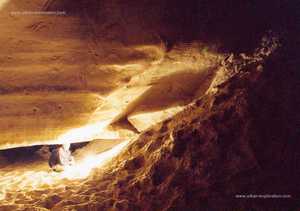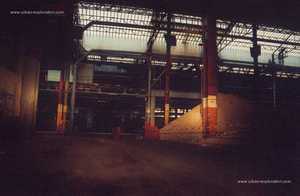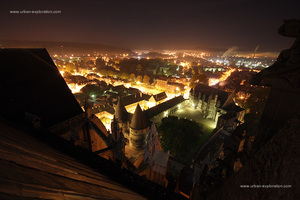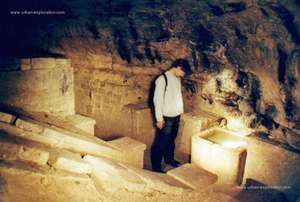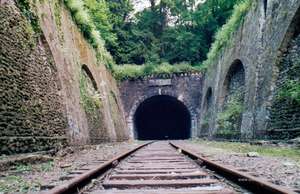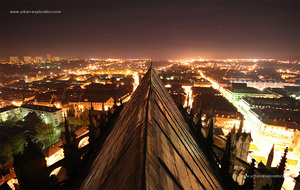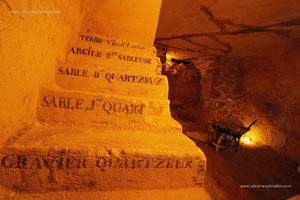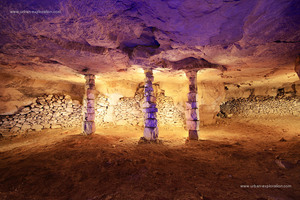page rank 50
The origin of the silver-lead mines Trémusson is Roman. It was already long pieces of Roman origin in the galleries. An excavation site has confirmed the original site, by the discovery of tiles to hook on both sides of the creek.
In the late 17th century, the English are precursors in the mining of nonferrous metals. They buy logging concessions in Britain. However, the site is still not exploited Trémuson. The concession is then awarded on 1 April 1732 to a Breton of Morlaix Guillotou of Kerver. Speculation around the precious metal is growing, which does not prevent the owner from going bankrupt due to a bad investment.
In 1740 the Mining Company of Lower Britain bought the concession. It will take 40 years to industrialize the mines. In 1782, more than 500 people work at the mine site. The size of the concession is over 90,000 hectares. It will never be fully exploited. At the end of the 19th century, the exploitation fall. The owners regularly change without success.
It was not until 1922 that the operation resumes. A laundry room is built on a hillside in 1924. She can wash the ore and the sort because the deposit is less rich than in ancient times. A year later, a foundry was built. The operation is successful for ten years, then the company suffers Dufourg the general crisis. In 1931, the mine was permanently closed. It will never be exploited.
Today, the mines are protected refuges for bats but the many miles of tunnels continue to drain the lead in the village by water infiltration. The villagers can not eat vegetables from their gardens or drink water polluted groundwater. There are remains of the laundry and the foundry behind the village.
source: patrimoine.region-bretagne.fr(FR)
In the late 17th century, the English are precursors in the mining of nonferrous metals. They buy logging concessions in Britain. However, the site is still not exploited Trémuson. The concession is then awarded on 1 April 1732 to a Breton of Morlaix Guillotou of Kerver. Speculation around the precious metal is growing, which does not prevent the owner from going bankrupt due to a bad investment.
In 1740 the Mining Company of Lower Britain bought the concession. It will take 40 years to industrialize the mines. In 1782, more than 500 people work at the mine site. The size of the concession is over 90,000 hectares. It will never be fully exploited. At the end of the 19th century, the exploitation fall. The owners regularly change without success.
It was not until 1922 that the operation resumes. A laundry room is built on a hillside in 1924. She can wash the ore and the sort because the deposit is less rich than in ancient times. A year later, a foundry was built. The operation is successful for ten years, then the company suffers Dufourg the general crisis. In 1931, the mine was permanently closed. It will never be exploited.
Today, the mines are protected refuges for bats but the many miles of tunnels continue to drain the lead in the village by water infiltration. The villagers can not eat vegetables from their gardens or drink water polluted groundwater. There are remains of the laundry and the foundry behind the village.
source: patrimoine.region-bretagne.fr(FR)
page rank 50
The printing-machines were located in the basement of the building. When i took the photography, there was an old smell of oil.
page rank 50
In winter, there are many bats in this quarry, thank you not to disturb them!
page rank 50
During the demolition of the island, there were huge piles of debris everywhere. They are in fact the walls of the partitions that were between some pillars to demarcate areas.
page rank 50
keywords : BUTTRESS FLYING ROOFTOPS CATHEDRAL CASTLE TOWER BEAUVAIS
Write a comment - See the comment
Write a comment - See the comment
You can't see it, but there is a little stairs on the right, on the roof.
page rank 50
Quarries of Paris - The fountain of the Chartreux.
The Fountain Room of the Carthusians was built in 1819. The order of Carthusian monks had disappeared during the French Revolution. There is a magnificent double staircase which gives access to the fountain. Further, a low water level is used to measure the height variations of the water table. The fountain was built by the Inspectorate General of underground quarries to supply water to underground workers.nterirdischen Steinbrüche gebaut, um Wasser in die U-Arbeiter zu versorgen.
The Fountain Room of the Carthusians was built in 1819. The order of Carthusian monks had disappeared during the French Revolution. There is a magnificent double staircase which gives access to the fountain. Further, a low water level is used to measure the height variations of the water table. The fountain was built by the Inspectorate General of underground quarries to supply water to underground workers.nterirdischen Steinbrüche gebaut, um Wasser in die U-Arbeiter zu versorgen.
page rank 50
The tunnel entrance of the small ring in the Parc Montsouris.
The creation of a railway track near Paris was decided in 1851. Very quickly, the main stations of Paris are linked, including that of Bercy. In 1867, the loop is completed.
Following the increase in passenger traffic on the subway, going to the inner ring decreases. In 1934, there is more train traveler. Only freight trains. In 1993, the entire line is abandoned, with the exception of the line that runs along the banks of the Seine, used by commuter trains.
The creation of a railway track near Paris was decided in 1851. Very quickly, the main stations of Paris are linked, including that of Bercy. In 1867, the loop is completed.
Following the increase in passenger traffic on the subway, going to the inner ring decreases. In 1934, there is more train traveler. Only freight trains. In 1993, the entire line is abandoned, with the exception of the line that runs along the banks of the Seine, used by commuter trains.
page rank 50
From the lantern tower, where there is many bells. You can make you own bell concert, but not loudy please ;)
page rank 50
The name of each geological layer is engraved on the steps of a staircase of exposure. Beside the name is the depth at which there is the geological layer.
- Topsoil
- Clay sandy red
- White Sand quartz
- Sand yellow quartz
- Gravel quartz
- Topsoil
- Clay sandy red
- White Sand quartz
- Sand yellow quartz
- Gravel quartz
page rank 50
The underground limestone quarry of Bazemont, located in the Yvelines, was exploited for its rough limestone. There are still several excavations along the quarry road. People said in the village that the steeple of the cathedral of Chartres was built with stone from this quarry.
The quarry is also witnessed the wars of the 19th century. There are many drawings of ancient time. Drawings of soldiers, praise God, graffiti. Second quarries are reused in mushroom places. You can see the remains of the culture of the mushroom into stacks.
People of Bazemont also operated quarries in manufacturing lime from limestone. A furnace that access was by way of Grignens are still at the bottom of the valley Rogère.
source: Website of the City of Bazemont
The quarry is also witnessed the wars of the 19th century. There are many drawings of ancient time. Drawings of soldiers, praise God, graffiti. Second quarries are reused in mushroom places. You can see the remains of the culture of the mushroom into stacks.
People of Bazemont also operated quarries in manufacturing lime from limestone. A furnace that access was by way of Grignens are still at the bottom of the valley Rogère.
source: Website of the City of Bazemont
AQUATIC ARCH AXA BATTERY BIG BILLANCOURT BLOCK BOUGIVAL BOULOGNE BRIDGE BRITANNY BUILDING BUNKER BUTTRESS CASTLE CATACOMBS CATHEDRAL CB31 CENTER CHALK CHARTRES CHURCH CIMENTERIE CLINIC CONFLANS CORRIDOR COUTANCES CRANE CRUDE DEFENSE DENFERT DOME DOOR DRAWING ESSERENT ETIENNE FACTORY FACULTY FLYER FLYING FORT FRANCE FRONT GALLERY GLASSROOF GRS GYPSUM HERBLAY HONORINE HOUSE INDUSTRIAL ISLAND JAGUAR LADER LADY LEU LIMESTONE LYON MAGINOT MAHON MAP MARLY MEDICAL MEDIEVAL MERY MEUDON MILITARY MINE MINISTRY MONTALETS MONTESSON MONTROUGE MONUMENT MUSEUM MUSHROOM OCHRE OFFICIAL OISE OPERA ORANGIS ORSAY OSSUARY OUR PALACE PALAISEAU PANORAMICAL PAPERMAKING PARIS PAUL PENITENTIARY PILLAR POINT POND PONTOISE PORT PROVENCE QUARRY RAIL RAILING RENAULT RIS ROCHEREAU ROOFTOPS ROOM ROUDOUDOU SAINT SCHOOL SEGUIN SEINE SITE SOUTH STAIRS STATION STATUE STORE SWIMMING TECHNICAL THEATER TOWER TRIEL TROCADERO TUNNEL ULIS UNDERGROUND UNIVERSITY VARIOUS VAUX WAGON WALL WASTELAND WATER WELL

